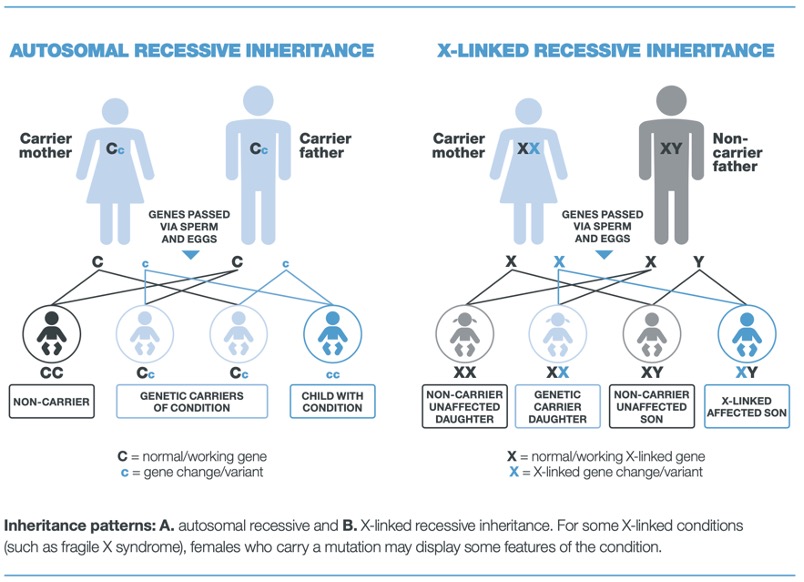If you’re one of the 70% of women around child-bearing age currently using some form of contraception, you may be wondering, ‘can birth control affect my future fertility?’1 The short answer is no – most methods of contraception do not have any long-term effects on your ability to fall pregnant. However, it can be helpful to understand how different types of contraception affect your body, and how to plan ahead if you are ready to start trying to conceive.
Contraceptive use and future fertility
Whether you’re using the oral contraceptive pill (commonly known as ‘the pill’) or another type of reversible contraceptive, such as contraceptive implants and intrauterine devices (IUDs), you can rest assured that your chances of having a baby in the future will not be impacted. One large analysis of approximately 14 500 women across 22 different studies found that the use of reversible contraceptives, irrespective of how long for, does not negatively impact a woman’s chances of conceiving.2 However, depending on the type of contraception you are using, your ‘return’ to fertility could slightly differ in the short term.
Below are some common types of reversible contraceptives and what you can expect to happen once you discontinue their use.
Oral contraceptive pills
Amongst Australian women, oral contraceptive pills are the most popular form of birth control, with usage rates between 28–33%.3 While oral contraceptive pills are collectively known as ‘the pill’, there are two different types. The first type is called the combined pill because it contains estrogen and progestogen, two female hormones that prevent your ovaries from releasing an egg each month. The second type is called the progestogen-only pill (POP) or mini pill. Unlike the combined pill, the mini pill only contains progestogen and helps prevent pregnancy by thickening cervical mucus, so that sperm can no longer reach an egg.
Once you stop taking the combined pill, your natural hormone levels begin to return to normal. Usually, most women can expect their regular menstrual cycle to return within 1–3 months. Depending on when ovulation begins again, you may be able to fall pregnant within a few months or even weeks after discontinuing your use of the combined pill. However, it is important to note that as soon as you stop taking the combined pill, there is always the chance of a pregnancy occurring. Similarly, it is possible to conceive as soon as you discontinue using the mini pill. As you stop taking the mini pill, the mucus in your cervix changes making it easier for sperm to reach an egg again.
Contraceptive implants
Like the pill, contraceptive implants help prevent pregnancy by slowly and steadily releasing etonogestrel (a progestin hormone). The etonogestrel contained inside the implant, which comes in the form of a small plastic rod, works in two ways. It stops your ovaries from releasing an egg each month and also thickens your cervical mucus so that it is harder for sperm to reach and fertilise an egg. Contraceptive implants are placed under the skin in your upper arm and are effective for three years. However, you can choose to have your implant removed before this time if you wish to start trying for a baby. Once you have your contraceptive implant removed, your menstrual cycle will usually return within a month. If ovulation returns quickly, it is possible to fall pregnant quite soon after implant removal.
Intrauterine devices
Intrauterine devices, commonly referred to as IUDs, prevent pregnancy by limiting the movement and survival of sperm in the uterus. IUDs are small devices that sit inside the uterus and come in two forms: the copper IUD and the progestogen IUD. Both function in a similar way. They stop sperm from fertilising an egg and also alter the endometrium (the lining inside the uterus), so that if an egg is fertilised, it does not progress to a pregnancy. If you decide you are ready to start or grow your family, you can have your IUD removed and expect a relatively quick return to your normal fertility.
The vaginal ring
Just like the pill, the vaginal ring also contains the two female hormones, estrogen and progestogen, which work by stopping ovulation. However, unlike the pill, the vaginal ring needs to be inserted for three weeks, removed, then reinserted a week later. This enables you to have a monthly bleed in-between new rings. Discontinuing its use typically leads to a quick return to your regular fertility level.
Depo Provera (hormone injection)
Depo Provera is a hormone similar to progesterone and upon injection, sends a signal to your body to stop ovulating. Because injections are given every three months and cannot be removed from your body like an implant or IUD, you will have to wait for hormone levels to decline before your fertility levels return to normal. While some women get their periods within six months of stopping Depo Provera injections, others may find that their regular menstrual cycle takes 12 months to return. However, within 12 months of discontinuation, over 50% of women fall pregnant and within two years this statistic rises to 90% of women.4
Condoms and female condoms (diaphragm)
Condom usage amongst Australian women ranges between 20–24% – a close second to the pill.3 Because condoms use a physical barrier to prevent sperm from gaining access to the egg and do not contain any hormones, your regular fertility is unaffected by this method of contraception. Unlike other contraceptive methods, condoms can also protect you from sexually transmitted infections (STIs). This is important when it comes to your fertility, as STIs can lead to inflammation of your reproductive organs and make it more difficult to conceive.
On the other hand, the female condom (also known as a diaphragm) does not protect against STIs, as it sits inside the vagina. However, like condoms, diaphragms stop sperm from reaching an egg by serving as a barrier. Therefore, your regular fertility is also unaffected by this form of contraception.
Falling pregnant after contraceptive use
It can be frustrating and stressful when you do not fall pregnant as soon as you would have liked. When this happens, many women question whether their prior contraceptive use has had a negative impact on their fertility. It’s important to remind yourself that this is unlikely to be the case and that it’s very normal for natural conception to take some time – up to 12 months is considered normal.
If you decide you are ready to fall pregnant naturally and stop using your contraception, it can also be beneficial to make a few lifestyle changes to help boost your chances of conceiving. This can include things like:
- Eating a healthy and balanced diet, including lots of omega-3 fatty acids
- Enjoying caffeine in moderation
- Sustaining from alcohol (the latest guidelines advise that there is no safe level of drinking during pregnancy)
- Giving up cigarettes
- Exercising three times per week, and
- Maintaining a healthy body mass index (BMI).
It is also important to start taking a pre-conception and pregnancy multivitamin to ensure you have adequate levels of folate before conceiving. This will prevent the risk of your baby being born with a neural tube defect, like spina bifida. A supplement will also provide you with healthy levels of iodine, iron and Vitamin D, all of which are either important for your baby’s development or for helping your body cope with the physical burden of pregnancy.
When to ask for help
If you are thinking about discontinuing the use of your contraceptive, it can be useful to speak to your GP or gynaecologist first, particularly if one of the reasons you use contraception is to help manage other gynaecological conditions such as endometriosis or dysmenorrhoea. Your doctor can also manage your expectations about the return of your period and provide important advice on pre-pregnancy care. Of course, some contraceptives, like contraceptive implants and IUDs, will require a doctor to remove them for you.
If you have any queries about your fertility or are concerned about your menstrual cycle following the use of contraceptives, you can make an appointment with me by calling (03) 9418 8299 or by booking online.
References
- Richters J, Grulich AE, Visser RO, Smith AMA, Rissel CE. Sex in Australia: Contraceptive practices among a representative sample of women. Aust N Z J Public Health. 2003; 27(2):210–16. ↩︎
- Girum T, Wasie A. Return of fertility after discontinuation of contraception: a systematic review and meta-analysis. Contracept Reprod Med. 2018; 3:9. ↩︎
- Family Planning NSW. Contraception in Australia 2005–2018. Ashfield, Sydney: FPNSW; 2020 [Accessed 7 February 2022]. ↩︎
- The Royal Women’s Hospital. Depo Provera. Parkville, Melbourne [Accessed 7 February 2022]. ↩︎
- The Royal Women’s Hospital. Contraceptive pills. Parkville, Melbourne [Accessed 7 February 2022].
- The Royal Women’s Hospital. Contraceptive implants. Parkville, Melbourne [Accessed 7 February 2022].
- The Royal Women’s Hospital. Intra Uterine Device (IUD). Parkville, Melbourne [Accessed 7 February 2022].
- The Royal Women’s Hospital. The vaginal ring. Parkville, Melbourne [Accessed 7 February 2022].
- The Royal Women’s Hospital. Condoms & diaphragms. Parkville, Melbourne [Accessed 7 February 2022].










